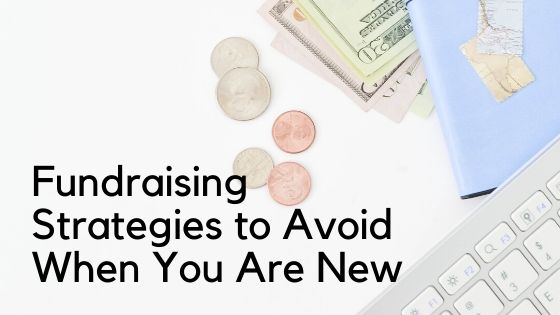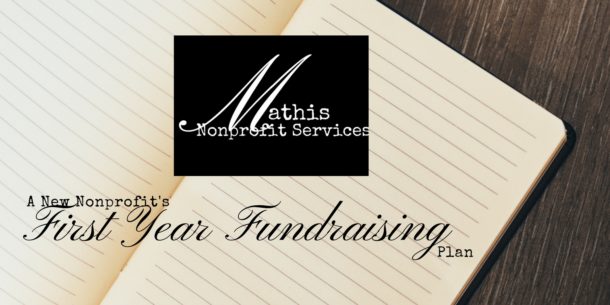Many nonprofit Founders find fundraising confusing, hard, and quite honestly there is so much else to do that fundraising takes a backseat until it can’t be ignored. When they finally get serious about fundraising they find they have fallen into a fundraising model that simply doesn’t work. Sometimes they figure it out too late, becoming part of the 50% of nonprofits that fail because of lack of funding.
To be clear, I define fundraising models that don’t work as ones that are unsustainable – they do not raise enough funds long-term. Sustainable fundraising is a long-term game.
I’ve been on a new Nonprofits board where it felt like an event of the month or “oooh shiny” fundraising was the norm. I work with Founders and new organizations executive directors and often they are using the fundraising models that don’t work. They often don’t know any other options and so they get on the event hamster wheel or they buy into the grants are free and easy money myth and worry every day about funding.
One memorable Executive Director I’ve worked with was new to the organization and followed the Founder. The Founder was using a combination of her own money, grants, and her friends donations to keep the organization going. The problem was that when the Founder left the organization, the founder’s money and that of her friends’ money went away too. They were stuck with about 250 donor email addresses where half or more were friends and people with relationships to the Founder. They were applying for grants they just weren’t competitive for, and one grant funding source that was quickly becoming their only funding source. It was a sad situation.
I don’t want the nonprofits I serve become one of these nonprofits. Let’s talk about the fundraising models to avoid in the fundraising strategies that will work for you. Here are eight models that don’t work, especially when you are new.
1. Any Sole Funding Source
Nonprofits cannot maintain operations long-term if there is only one source. When you put all your eggs in one basket, so to speak, you are completely dependent on that source. If that one source gets cut or goes away, your organization is in serious trouble. My rule of thumb is that no one funding source should be more than 1/3 of your income. The rationale is that if you completely lost a third of your income, you could make it up by cutting expenses and increasing your other income streams while you figure out your next move. Losing a third of your income would be hard but your organization wouldn’t be in jeopardy.
2. Founder Dollars
Many founders are tempted to put their own money into an organization because, at first, you are all you have and then it just becomes easier to do it yourself. The problem is, unless you are independently wealthy, it’s not sustainable. The organization will need more and more money as it grows. Most people don’t have that kind of wealth. The founder becomes disenchanted because they are the only funding and soon quits. When this happens, not only does the dream of the nonprofit die but the organization joins the statistic of failure.
3. Grants
I talk about the grant myth in a blog post, The Three Myths Stopping You From Fundraising. Grants are the icing on the cake, not the cake. When you don’t get the grant or the whole asked amount isn’t funded then you find yourself in crisis mode. The benchmark for grants is one in 10 proposals get funded. That number can increase if you have a relationship with foundations you apply to and do a lot of research to make sure your proposal aligns with the foundations mission. Grants work best for an organization when there is a specific one time project you would like to fund it.
4. Events
I see nonprofits get on the event hamster wheel all the time. It seems like the organization has an event of the month that they are always preparing for. Events take time and money to execute. Events will also create burn out if you’re not careful. I find they are the most expensive way to raise money. The problem with event after event is that the organization has a hard time keeping quality control and eventually tarnishes the organizations reputation in the community. The best way to incorporate events in a new nonprofit is to have one event and do it well. Make it your signature event. Having one top notch event will bring in more money than the endless event parade.
5. Corporate Donations
Corporate donations are competitive. Businesses donate to charities for two reasons, 1) the organization aligns with their corporate responsibility values and/or 2) the business wants to reach a segment of the population your organization or event brings in. If you can prove that your organization fulfills these objectives, you are likely to get the donation.
6. Rich People
In the fundraising world, this is called major donors. The reality with major donors is that they only fund a select one or two charities, so getting on their list is hard. Major donors require a continuous cycle of identification, cultivation, solicitation, and stewardship. Major gift experts say you start with your donor database and identify the five top individual donors. Do you see how 1)having a donor database and 2) practicing the major gift cycle on all those in the database help you with “rich people”? I want you to master “non-rich people” fundraising before you level up to “rich people”.
7. Crowdfunding
I’ve seen crowdfunding help get an organization started but after that, crowd fundraising should be avoided. In professional fund pending circles, crowdfunding is seen by most owners as a joke. How many times have you heard your coworkers joke that they’ll just set up a Go Fund Me account? It’s because platforms like Go Fund Me have been used for things people find ridiculous. Did you see that campaign where a man wanted to be funded to stay with Betty White “with her permission” until the end of the year to “keep her safe and save a national treasure “? Or maybe you heard about the account created to “fund the wall”? Each time these accounts are reported in the news, the organizations that are using the accounts lose credibility. Credibility is the one key thing you are desperately trying to build!
Besides the credibility issue, there is a real behind-the-scenes issue with using crowdfunding sites. I was once involved with a Do It Yourself event. This event was solely taken on by a donor. The premise was that he was doing a Triathalon and wanted to raise money per mile he accomplished. That was a great idea! The problem was that he and his wife insisted on using a crowdfunding platform. Crowdfunding platforms aren’t set up for charitable donations. By going through the platform, the donations weren’t tax-deductible. The donors received the tax break when they gave us the check but because we didn’t collect the money from the individual donor, we couldn’t give a statement for their taxes. Also, we did not receive the names and contact information of any donor so we weren’t able to begin a relationship with the donor. Lastly, the event facilitator paid twice what we paid in fees for processing credit cards, meaning the organization received less in the long run.
8. Hope
I’ve seen organizations say – we are just going to hope the funding comes. It’s kind of a field of dreams attitude, if we build it, funding will come. Unfortunately, fundraising doesn’t come without a plan and working the plan.
So what does work for a new non-profit?
#1 Identify The Ideal Donor
I go into detail on how to create an Ideal Donor Avatar here. The more you know about who is most likely to donate, the more you can focus your efforts to get in front of them by speaking engagements or advertising.
#2 A Fundraising Plan
This plan will include multiple income streams as specific steps to get to the funding goal. Working the plan automatically puts my fundraising formula (consistency+intentionality+focus=funding) into practice. I have a Fundraising Plan blog post that can help you get started today.
Join the conversation on Facebook or in the comments by answering these questions:
What funding model surprised you most? Which do you need to stop doing?


 Most nonprofit leaders lay awake at night trying to figure out how to fund their mission.
Hi! I'm Alesha.
I teach sustainable fundraising in a way that they can take action today so they can serve their clients.
I can help you move from just getting started funding your new nonprofit to gaining confidence in your fundraising and building relationships to knowing what works for your organization and looking at the infinite game when it comes to funding. I’ve worked with nonprofit Founders and written the book I HAVE MY 501(C)3! NOW WHAT?!? Your Blueprint to Starting Your Nonprofit Without Being the Sole Funder that lays the foundations for funding in a new nonprofit.
I’ve worked in Development (Fundraising) Departments in large organizations and I know the no cost, low-cost methods they use to bring in funding. I bring those sound strategies to the nonprofits I serve.
Most nonprofit leaders lay awake at night trying to figure out how to fund their mission.
Hi! I'm Alesha.
I teach sustainable fundraising in a way that they can take action today so they can serve their clients.
I can help you move from just getting started funding your new nonprofit to gaining confidence in your fundraising and building relationships to knowing what works for your organization and looking at the infinite game when it comes to funding. I’ve worked with nonprofit Founders and written the book I HAVE MY 501(C)3! NOW WHAT?!? Your Blueprint to Starting Your Nonprofit Without Being the Sole Funder that lays the foundations for funding in a new nonprofit.
I’ve worked in Development (Fundraising) Departments in large organizations and I know the no cost, low-cost methods they use to bring in funding. I bring those sound strategies to the nonprofits I serve.